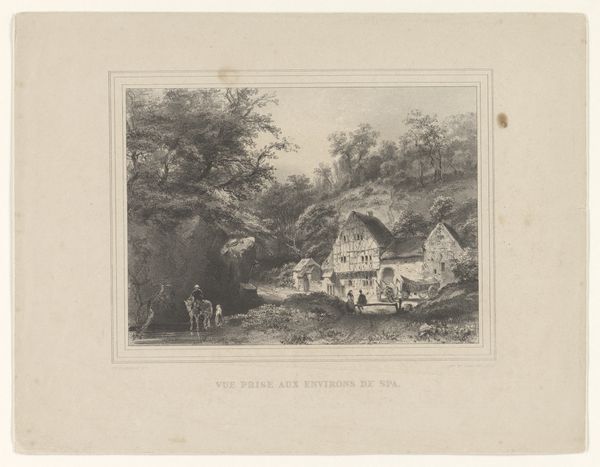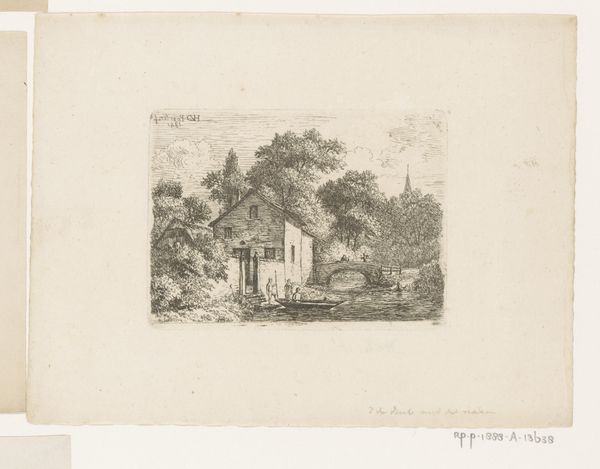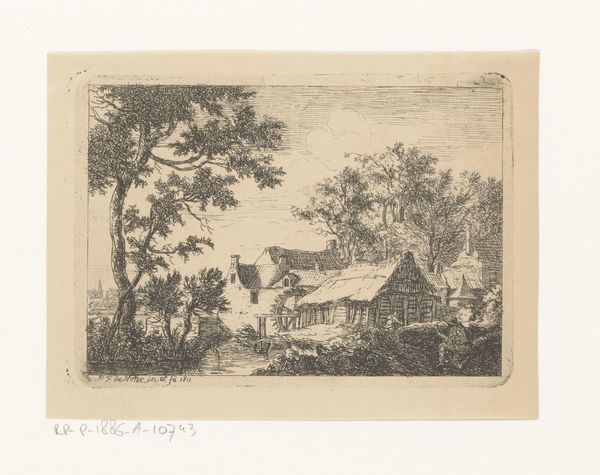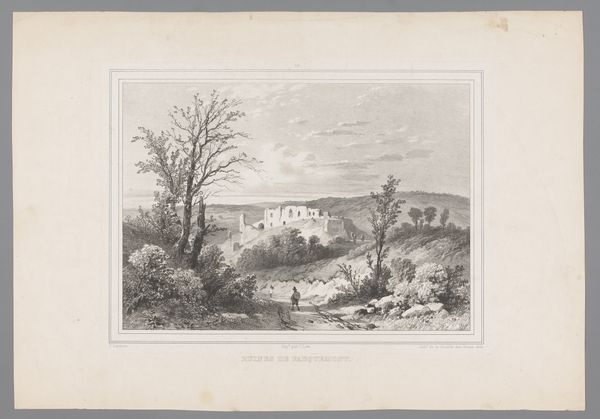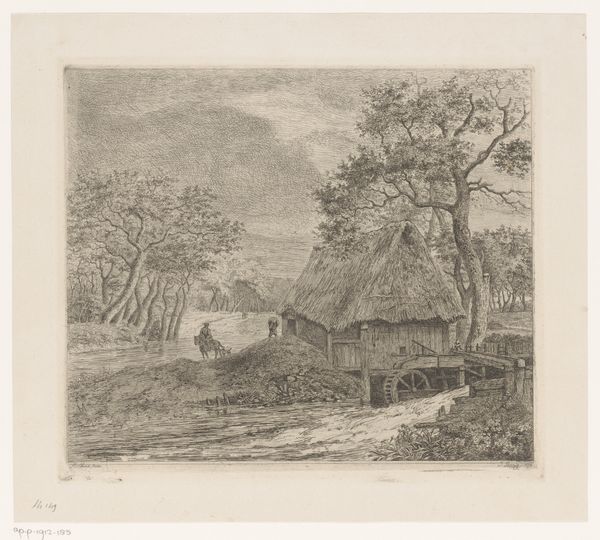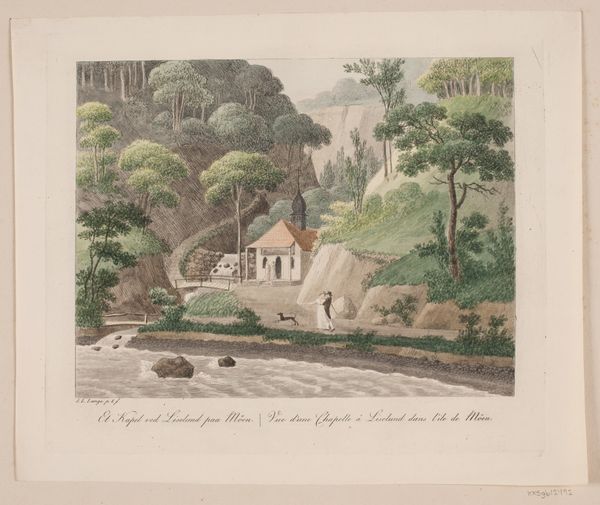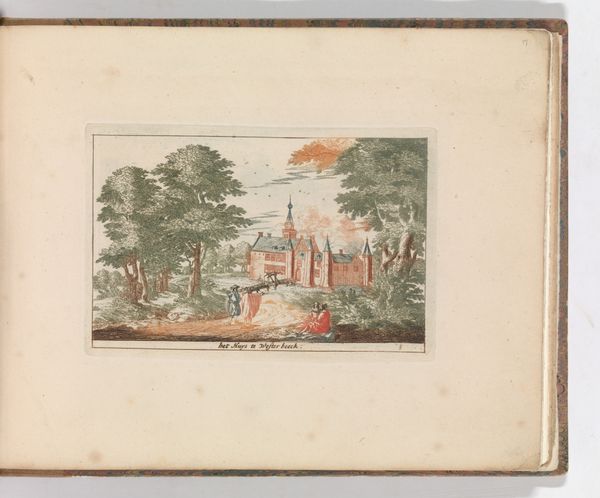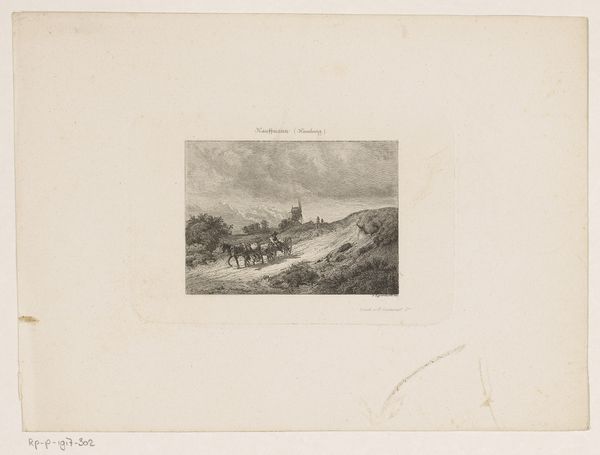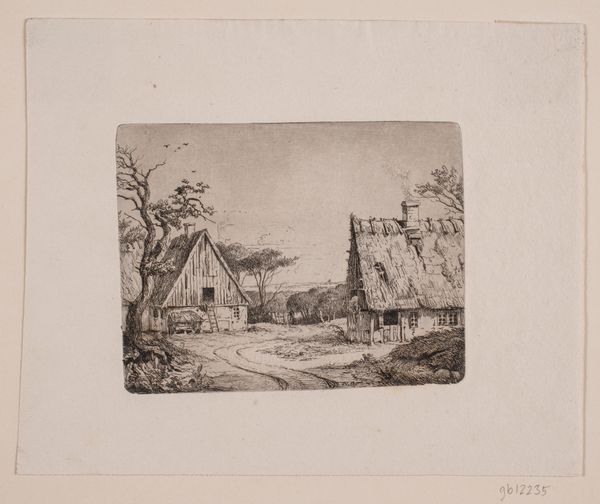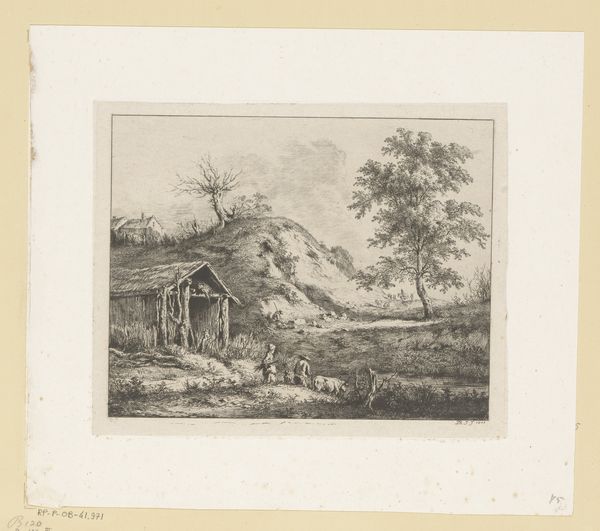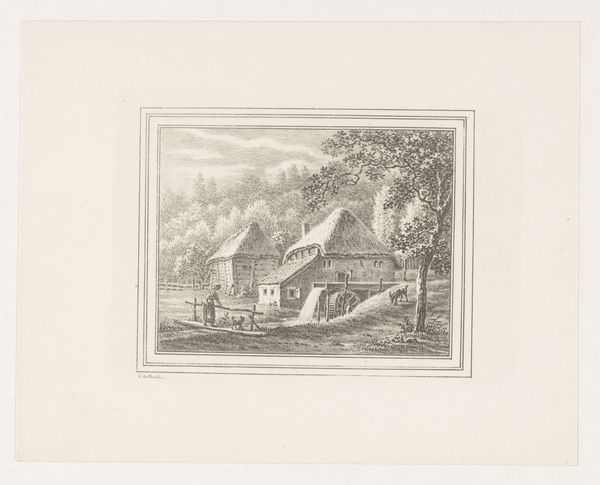
watercolor
#
neoclacissism
#
landscape
#
watercolor
#
watercolor
Dimensions: height 191 mm, width 269 mm
Copyright: Rijks Museum: Open Domain
Editor: This is "View of a House near a Bridge in Orbe" by Heinrich Rieter, created in 1782. It's a delicate watercolor piece. I’m struck by the contrast between the solid, man-made structures of the house and bridge, and the fluid, natural forms of the water and trees. What do you see in this piece? Curator: I’m drawn to how the materials themselves inform our understanding. Look at the labor involved. Watercolor, during this era, speaks to a particular type of artistic consumption, doesn’t it? A quicker, more portable medium, possibly indicating art being produced for a rising merchant class with more leisure time. Editor: So, the choice of watercolor reflects broader social shifts? It's not just about aesthetics? Curator: Precisely. Consider how the image promotes a very specific idyllic scene. Who benefits from this vision of pastoral beauty? What’s deliberately left out? I am thinking about laboring individuals, of course. This art is rarely a product of "artists." Look closer: What would be a good material alternative that does center them? Editor: Well, something like a tapestry maybe? Something inherently linked to collective labor and the material conditions of production. Curator: Yes, precisely. And beyond medium, the imagery is so composed and neat. This control of materials—both paint and building materials like stone—mirrors a desire for control over the landscape itself, and by extension, perhaps even society. Editor: It’s fascinating to think about the artwork in that light, going beyond the picturesque surface and questioning the underlying messages conveyed through materials and representation of society. Curator: Absolutely. Examining these material aspects allows us to decode the social and political landscape embedded within seemingly simple images.
Comments
No comments
Be the first to comment and join the conversation on the ultimate creative platform.
